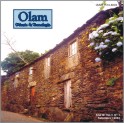CONFLITOS SÓCIO-AMBIENTAIS: A COLISÃO DO DIREITO NATURAL E CULTURAL E A PERCEPÇÃO AMBIENTAL FRAGMENTADA DA COMUNIDADE DE SERRA NEGRA NA APA DE GUARAQUEÇABA NO ESTADO DO PARANÁ, BRASIL
Palavras-chave:
Conflitos Sócio-Ambientais, Direito Natural e Cultural, Percepção Ambiental Fragmentada, Legislação Ambiental, Área de Proteção Ambiental, Populações Tradicionais.Resumo
RESUMO Sob a ótica constitucional, uma Unidade de Conservação (UC) que possui populações tradicionais deve fundamentar sua existência em pelo menos dois aspectos que merecem a proteção da Constituição Brasileira: o Natural e o Cultural. As Áreas de Proteção Ambiental (APAs), criadas de acordo com a Lei nº 6.902/81, são UCs destinadas a compatibilizar as atividades humanas e a preservação da biodiversidade, o que implica na proteção dos recursos naturais e culturais. No entanto, na maioria dos casos, o Direito Natural tem se sobreposto ao Direito Cultural, evidenciando conflitos sócio-ambientais e fazendo crer, por equívoco, que estes dois direitos fundamentais são incompatíveis. A APA de Guaraqueçaba, criada a partir do Decreto 9.883/85, com uma área de 3.134 km2 e população aproximada de 7.777 habitantes, não foge à regra: ao longo de sua história os modos de vida da população local foram paulatinamente transformados em função das restrições impostas pela Legislação Ambiental (LA). Ao restringir os meios de subsistência das comunidades locais considerados incompatíveis com a preservação ambiental e criminalizando as principais atividades extrativistas sem oferecer uma política de desenvolvimento para estas populações, provocou-se um sentimento de rejeição em relação às práticas de preservação da natureza. Este artigo discute a colisão do Direito Natural e do Direito Cultural na comunidade de Serra Negra, uma das regiões com maior incidência de conflitos sócio-ambientais da APA de Guaraqueçaba. Consideramos a falta de subsídios para uma adequada interpretação da LA e a desarticulação da cultura autóctone como elementos que influenciam a percepção ambiental fragmentada dessa comunidade local. A recente criação do Conselho Deliberativo da APA, de acordo com o Sistema Nacional de Unidades de Conservação (SNUC), tem sido apontada como um dos possíveis canais de discussão e conciliação entre os objetivos de conservação dos recursos naturais e promoção do desenvolvimento e qualidade de vida das populações humanas ali residentes. Palavras-chave: Conflitos Sócio-Ambientais; Direito Natural e Cultural; Percepção Ambiental Fragmentada; Legislação Ambiental; Área de Proteção Ambiental; Populações Tradicionais. ABSTRACT Under the Brazilian Constitution, a Conservation of Unit (CU) whith traditional populations living inside should base its creation on at least two aspects that deserve protection: the Natural and the Cultural Rights. The Environmental Protection Areas (EPAs) were created by the Law Decree nº 6.902/81, and are CUs destined to make compatible human activities and the preservation of biodiversity, implying in the protection of natural and cultural resources. However, in most cases, the Natural Right has overtaken the Cultural Right, evidencing socio-environmental conflicts and making mistankingly believe, that these two guaranteed constitutional rights are incompatible. The APA of Guaraqueçaba, created by the Law Decree 9.883/85, with an area of 3.134 km and a native population of 7.777 inhabitants, is not an exception to that rule: during its history the traditional social and economic activities of its populations have been gradually changed due to restrictions imposed by the current Environmental Legislation (EL). When restricting the subsistence economy by prohibiting main extractive activities without offering an alternative development policy that supported these populations, a feeling of rejection for environmental preservation was installed. This paper discusses the causes of the collision between the Natural and the Cultural Rights in the Serra Negra community of Guaraqueçaba, which has one of the greatest incidences of social and environmental conflicts in the region. We also consider the lack of subsidies for an adequate interpretation of the EL and the current disarticulation of the local autochtonal culture as potential causes of the poor environmental perception of that traditional population. We argue that the recent establishment of the Deliberative Council, according to the National System of Conservation Units (SNUC) policy, could represent one of the channels of conciliation of interests between main stakeholders in order to achieve the goals of natural resources preservation and the promotion of sustainable development for the resident human populations of the EPA. Keywords: Sustainable Urban Growth; Brownfield Areas; Re-Urbanization; New Urbanism; Environmental Perception; Conservation of Resources.Publicado
23-09-2016
Como Citar
Marangon, M. A., & Agudelo, L. P. P. (2016). CONFLITOS SÓCIO-AMBIENTAIS: A COLISÃO DO DIREITO NATURAL E CULTURAL E A PERCEPÇÃO AMBIENTAL FRAGMENTADA DA COMUNIDADE DE SERRA NEGRA NA APA DE GUARAQUEÇABA NO ESTADO DO PARANÁ, BRASIL. OLAM: Ciência & Tecnologia, 3(1). Recuperado de https://www.periodicos.rc.biblioteca.unesp.br/index.php/olam/article/view/11849







